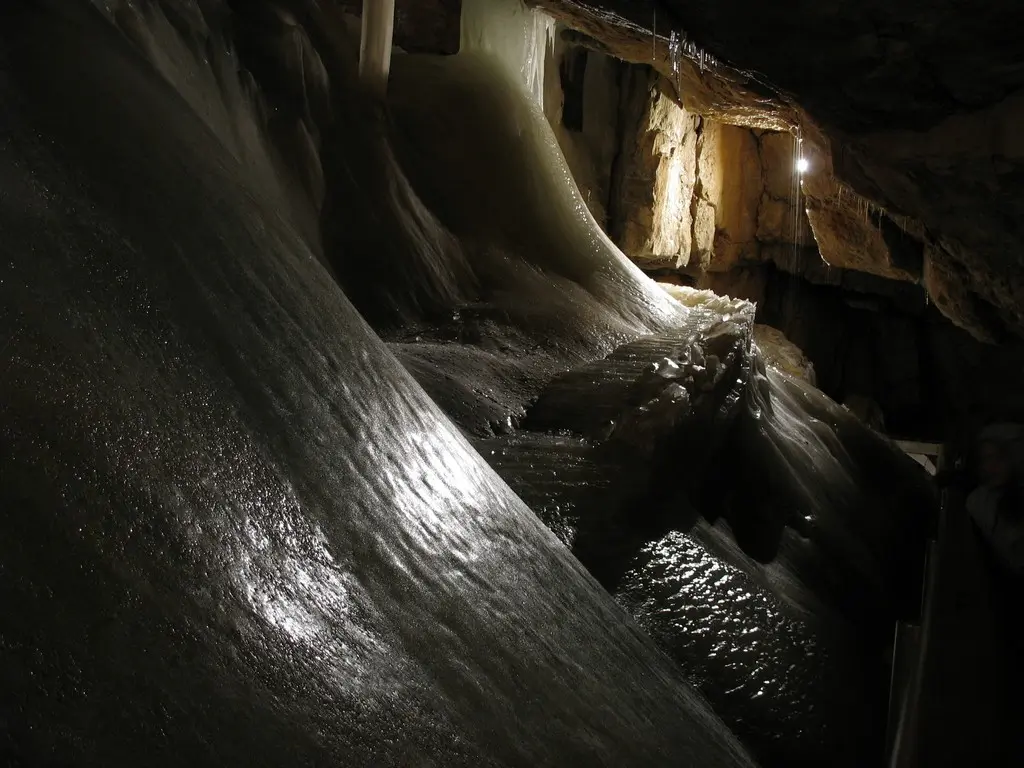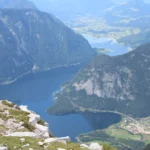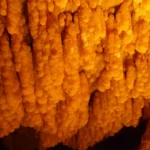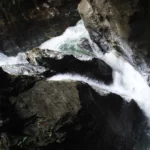Last Updated on 01/08/2023
The karst mountains of the Dachstein and the massif opposite, called the Dead Mountains, are dotted with numerous and longest cave systems. In fact, 240 caves and cave systems have been discovered in the area and new ones are found every year. But three Dachstein caves are open to the public: ice, very large and “roaring” cave.
If you want to see two caves in one day and walk along the plateau, then plan for this all day and arrive early. But it is better to do it within two days.
The first part is about Dachstein cable car, with photos from Dachstein plateau and observation point “Five fingers”.
Other posts about the region:
Hallstatt: Town, History and Museum, Salt Mine, Echerntal waterfalls and glacial garden, Around lake
Gosau
Bad Aussee Lakeside. Lake Grundlsee, Lake Toplitz, Lake Altaussee
Salzkammergut map
Dachstein, Pongau, Tennegau map
Salzkammergut Lakes
Gmunden
Dachstein caves map

“Roaring” cave Koppenbrüllerhöhle
Let’s start with the one below, – Koppenbrüllerhöhle.
You don’t need to climb the cable car to get to the Koppenbrüller Cave.
How to get
You can get there:
– on foot from the station or from the lower cable car station
– or by train to the next stop after Obertraun, Koppenbrüllerhöhle. And then about 20 minutes on foot.
The road from the station passes over the houses and the highway along the left slope of the valley (over an hour). The road from the cable car starts from the parking lot and goes all the time down the right slope of the valley past the swamp, proudly named “lake” Coppenwinkle (about an hour). Both trails lead to the Koppenbrüllerhöhle train station. Then there is one road over the Traun river. There are signs everywhere.
The Koppenbrüllerhöhle (translated something like “roaring cave”) is upstream of the Traun River at the confluence of which into Hallstatter lake Obertraun is located.

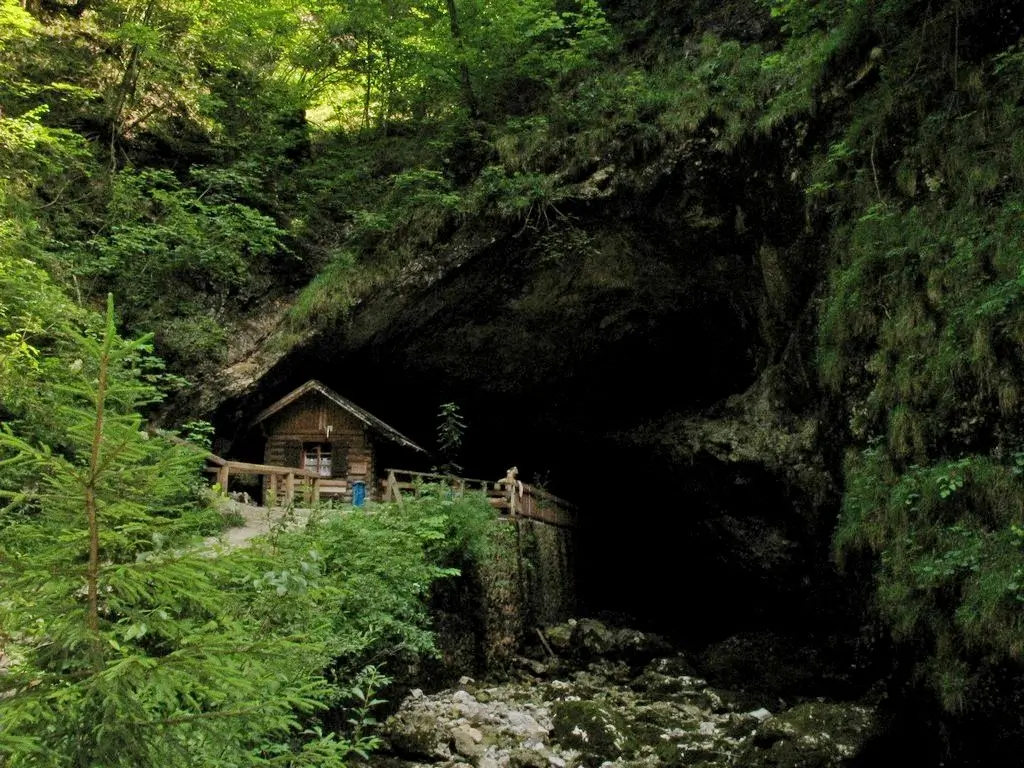

Excursions around the cave are held approximately once an hour. The tour guide leads the tour in German and English.
The temperature inside is about 6 degrees Celsius. Lanterns are issued at the entrance to the cave.
The cave is very long. But the tour is only a short section and takes about half an hour. Inside there are crevices and narrow passages. Water oozes from everywhere, fog rises. In one place you have to cross a stream.
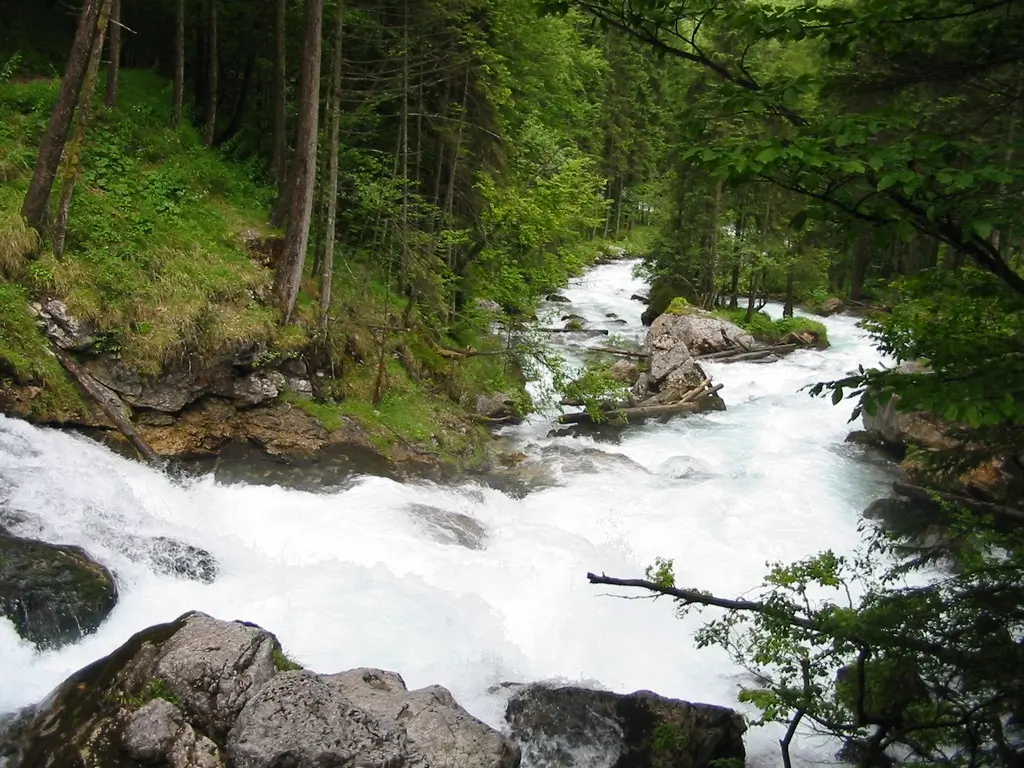
When it rains heavily or the snow melts, the cave is very quickly, literally in an hour or two, filled with water. It leaves then almost as quickly. Therefore, if a heavy rain has passed just recently, it is highly likely that the cave will be closed. If people find themselves in the cave when the water starts to arrive, they have only 20-30 minutes to leave it.
For groups, it is possible to conduct an excursion deep into the cave with special equipment. Such excursions must be agreed upon separately.
From the cave along the Traun river there is a way to the next valley. You can return back by train.
Dachstein giant ice cave Rieseneishöhle
Dachstein giant Ice Cave and Mammoth Cave are located not far from the first-stage cable car station. When buying a ticket for the cable car at the lower station, immediately decide whether you will go higher. Combined tickets (cable car + caves) or a ticket for all cable car lines are cheaper. See also if there are any special offers (for example for two days).
To get on a excursion, you need to get its number. At the exit from the station of the first line cable car there is another ticket office. You can buy a ticket here if you don’t have one yet. If you bought a ticket below, give it to the cashier. He will put down the time and number of the tour, explain which cave to start with (if you go both). Each cave is 15-20 minutes from the cable car.
View from Dachstein giant ice cave.
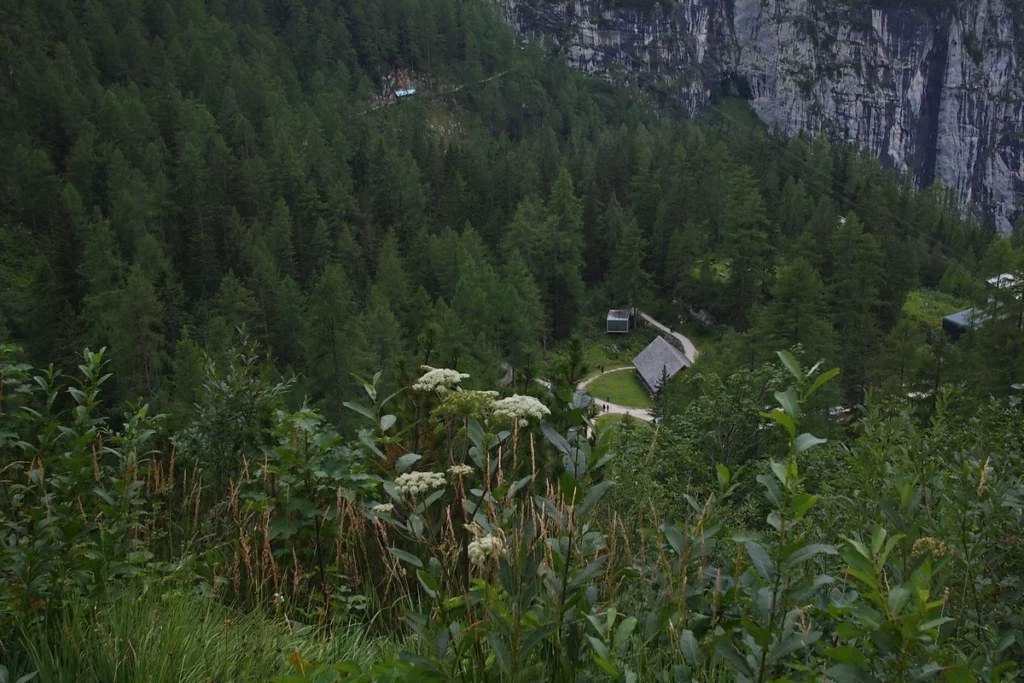
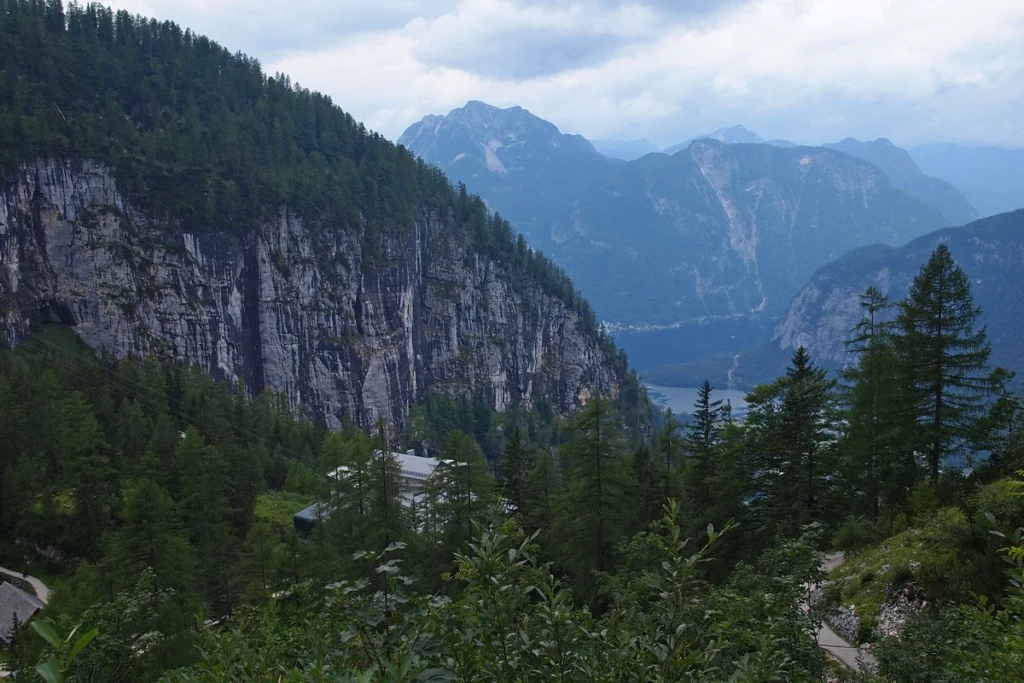
The Rieseneishöhle is one of the largest ice caves in the world. The largest is the Eisriesenwelt in Werfen, but it is inconvenient to get to it. Moreover you will not be shown all 40 kilometers anyway, but in both place only about 1 kilometer.
Read more about Eisriesenwelt in Werfen.
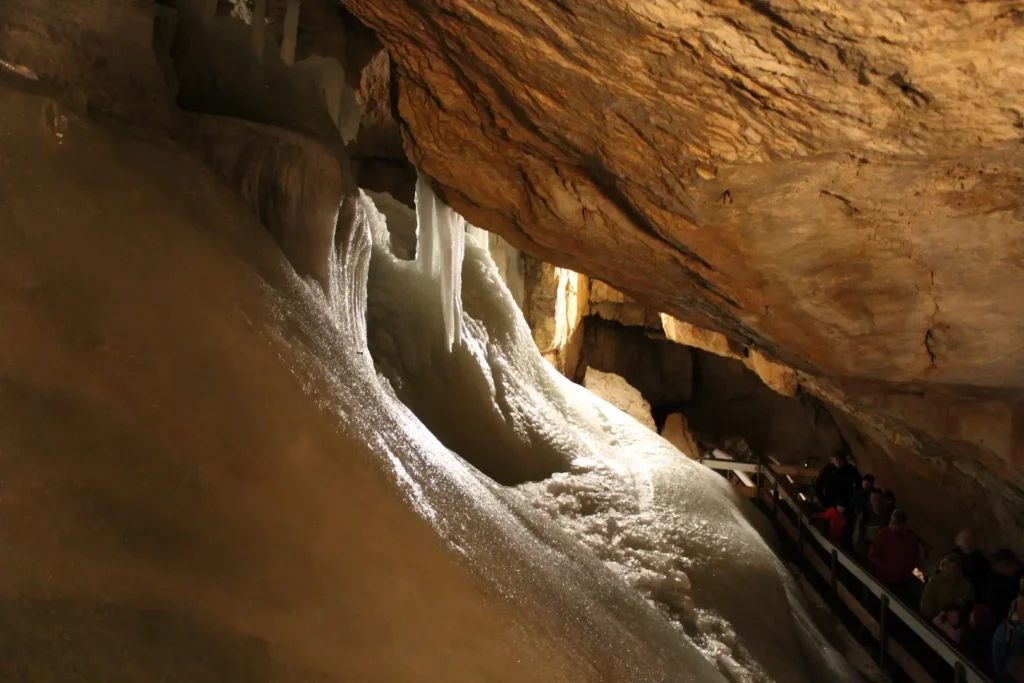
Temperature is about 0, do not forget to dress warmly. We regretted that we did not have gloves. The railing was cold, sometimes covered with frost.
Describing ice caves is completely pointless. You need to see these floods of ice, frozen waterfalls, curtains, bizarre ice pits filled with water. In summer, the ice melts, but in winter all this is compensated for. Each hall has its own name – from the Stalactite Hall and the Cathedral of King Arthur to the Cathedral of Parzifal and the Ice Chapel.
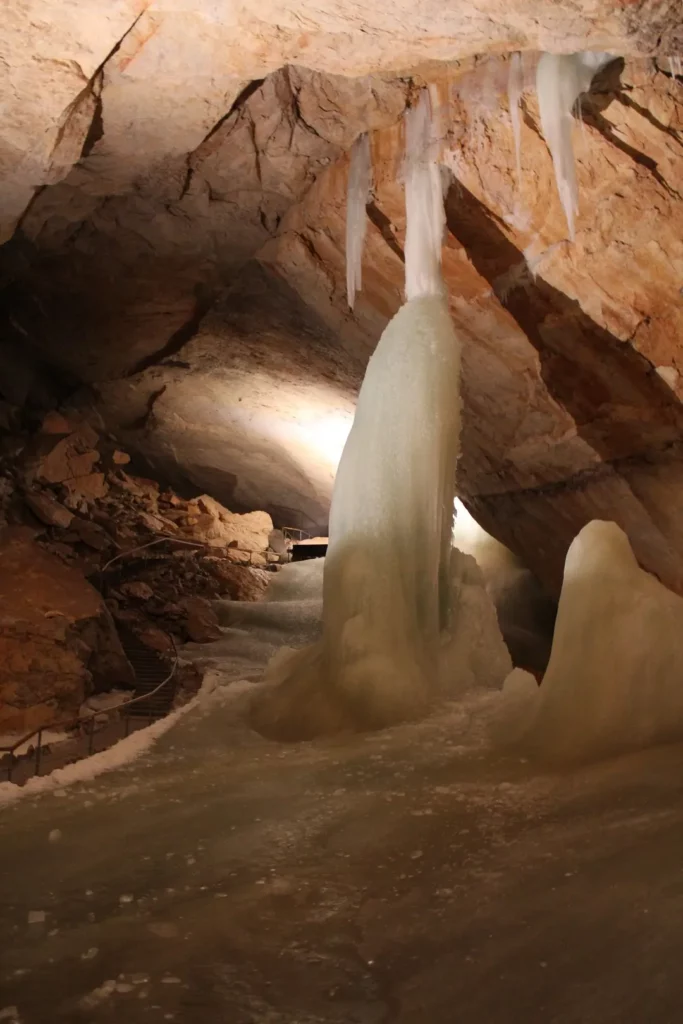

The tour lasts about 1 hour. The English comments are very short. But you can take a notebook with the text in English (ask the guide at the entrance).

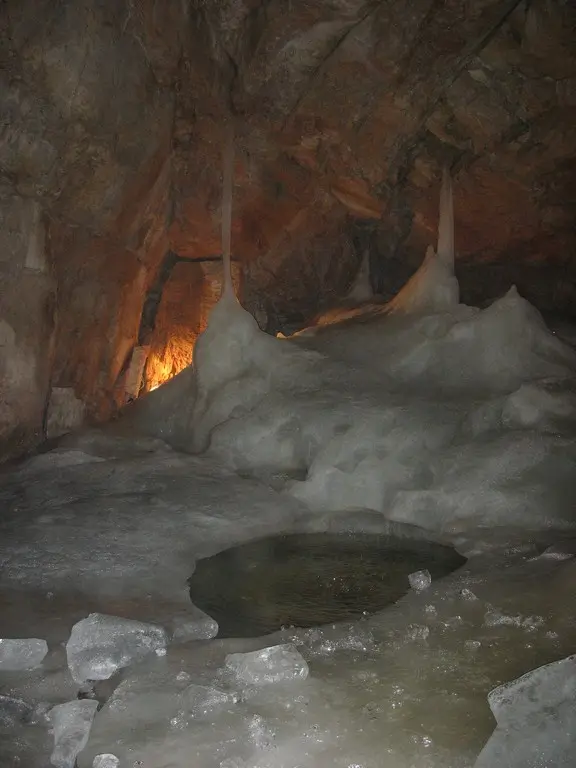
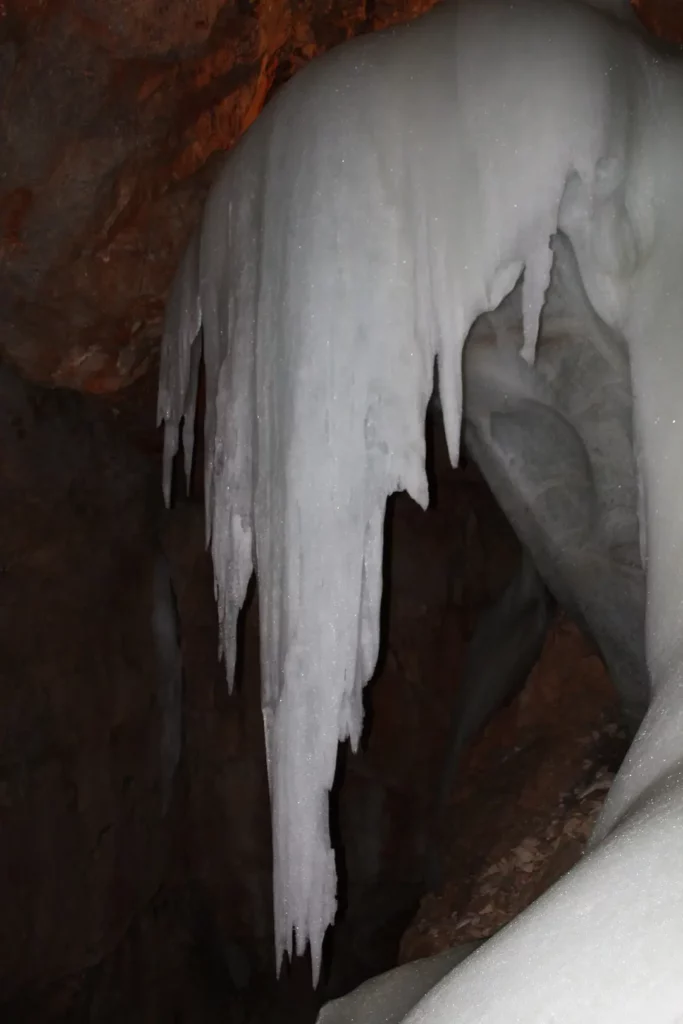
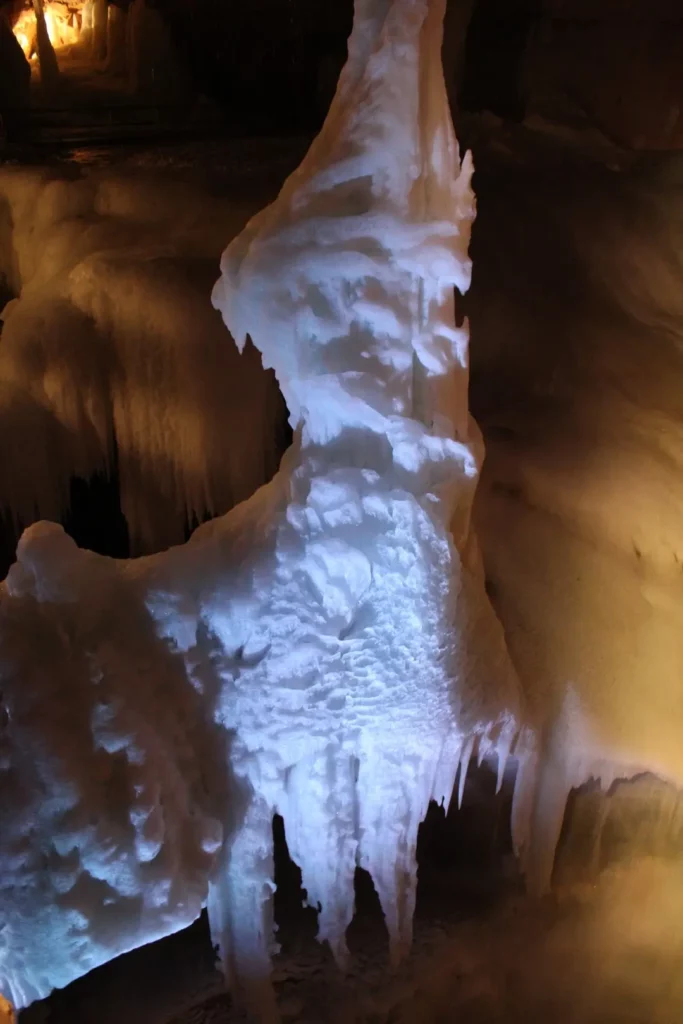
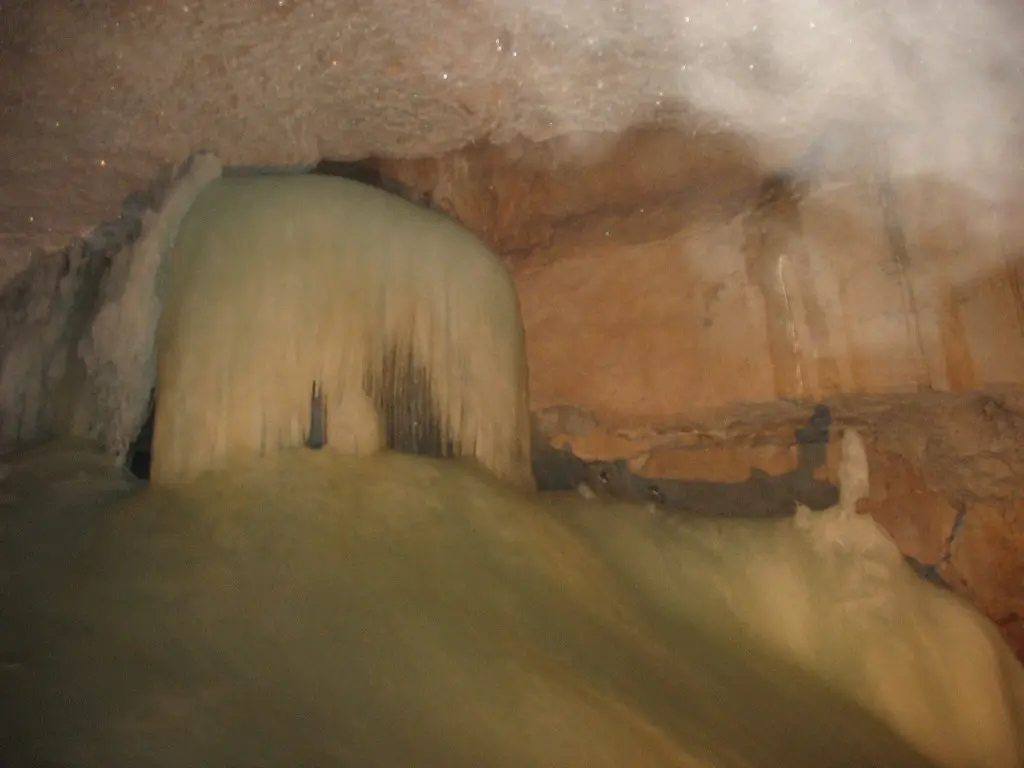
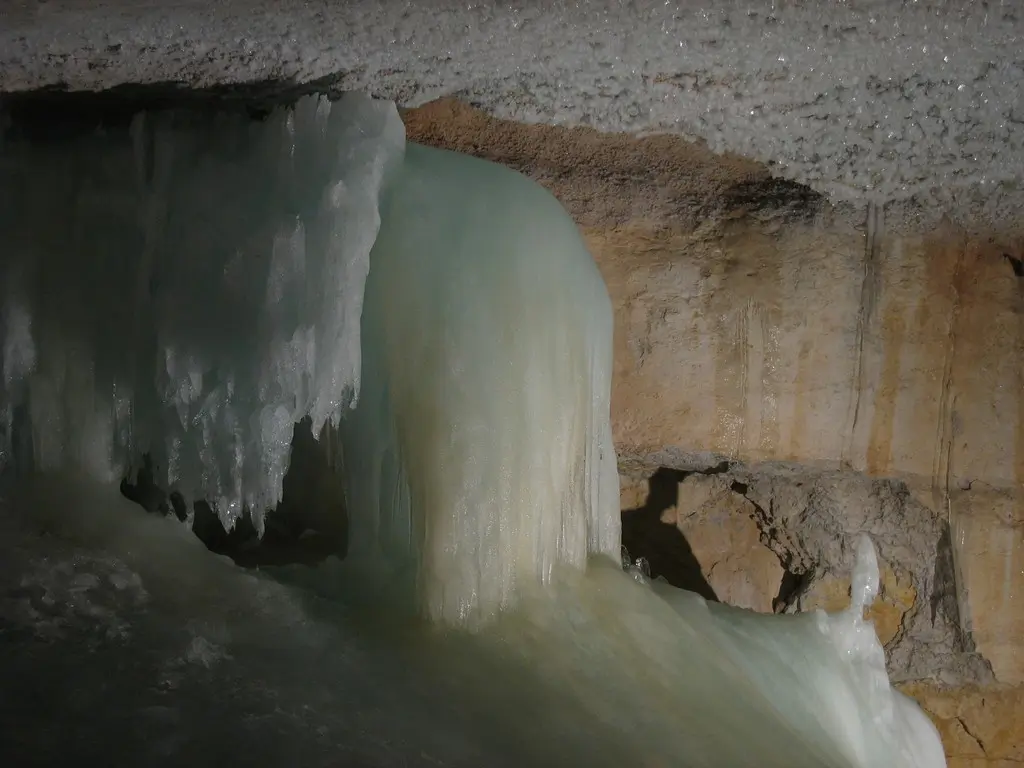


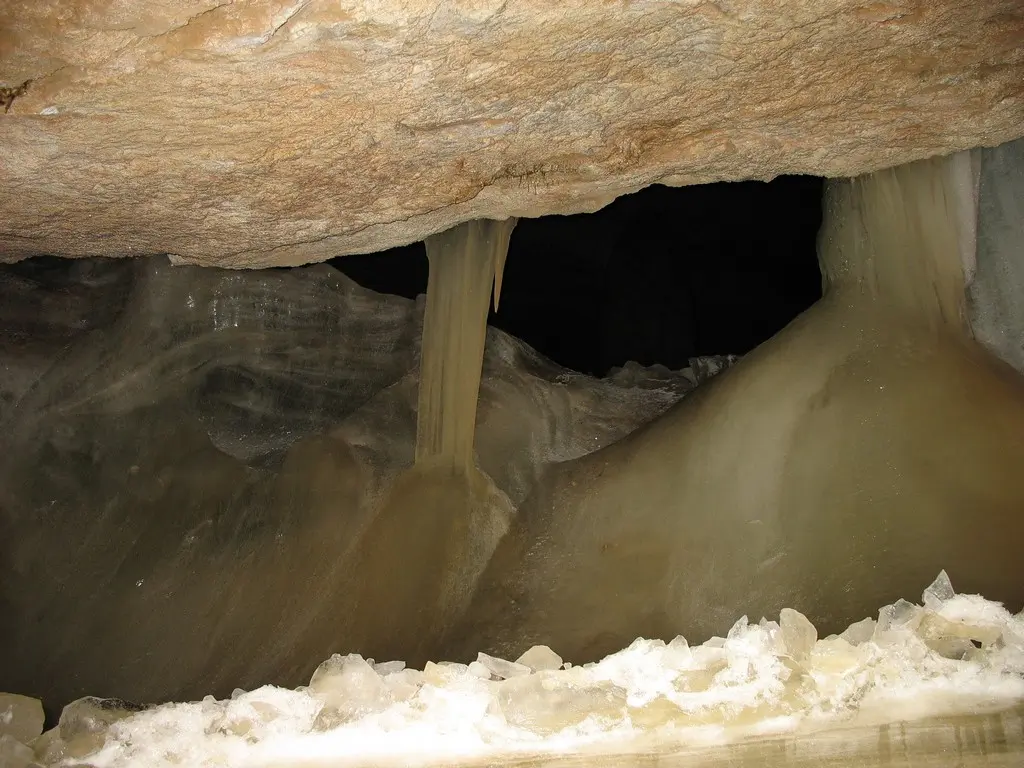
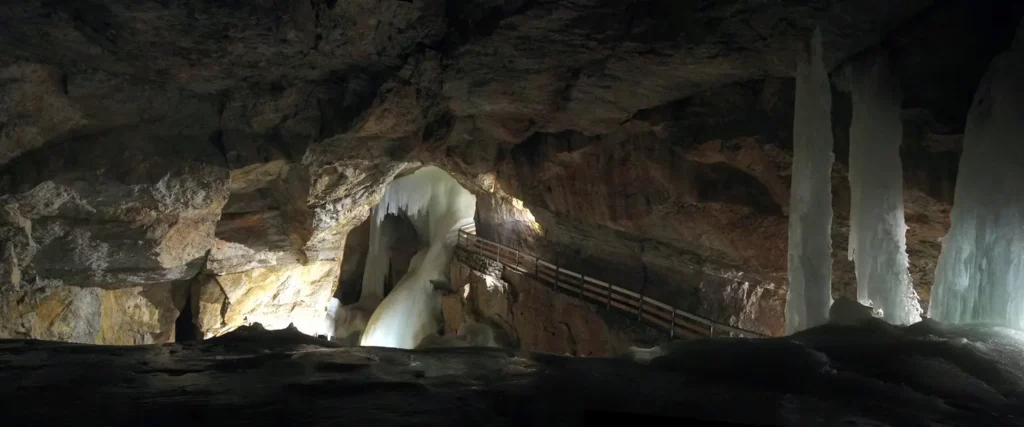
Dachstein Mammoth cave Mammuthöhle
The Dachstein Mammoth Cave is so named because of its size – it is really huge. If you have some free time, take a look at the cave museum near the cable car. There you will see a 3D light model of the cave.
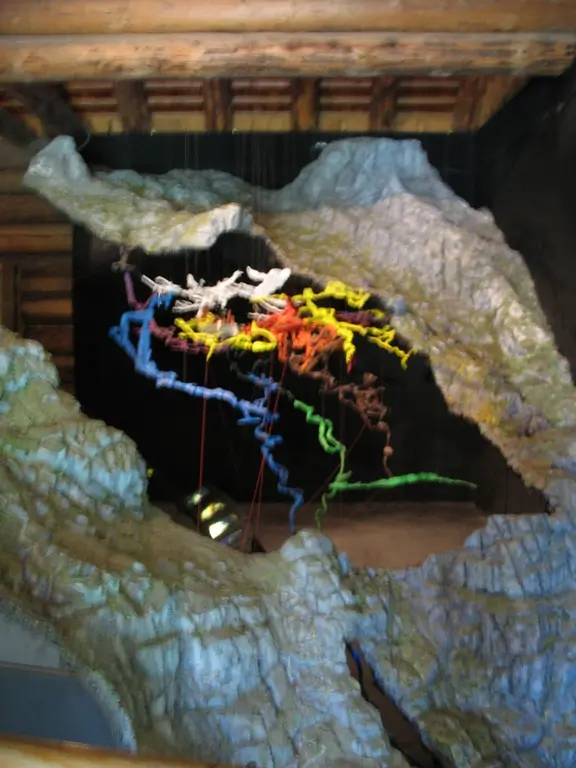
The upper point of the discovered passages is almost at the level of the station of the second station of the cable car. And the lower one is at the level of the lower station of the cable car, thus. The difference in heights of the discovered passages is at least 1199 m. The tunnels studied to date about 60 km. Naturally, the tour is about one kilometer.

On the way to the cave, tablets and drawings tell about different geological periods. The origin of the cave is not entirely clear. There are different opinions. One of them says that the cave was formed thanks to an underground river.
The huge halls of the cave alternate with narrow high passages into which steep stairs have been cut. Differently colored rocks (red – iron, white – as I understand, something like limestone) create curious designs on the walls. There are few stalactites in the cave – they do not grow at such low temperatures. But the few and short ones that exist make it possible to determine climate changes over thousands of years.
In the late Pleistocene period, cave bears lived in the cave. Their bones are still periodically found. Specific eyeless cave animals now live here, including the unique cave pseudo scorpion.
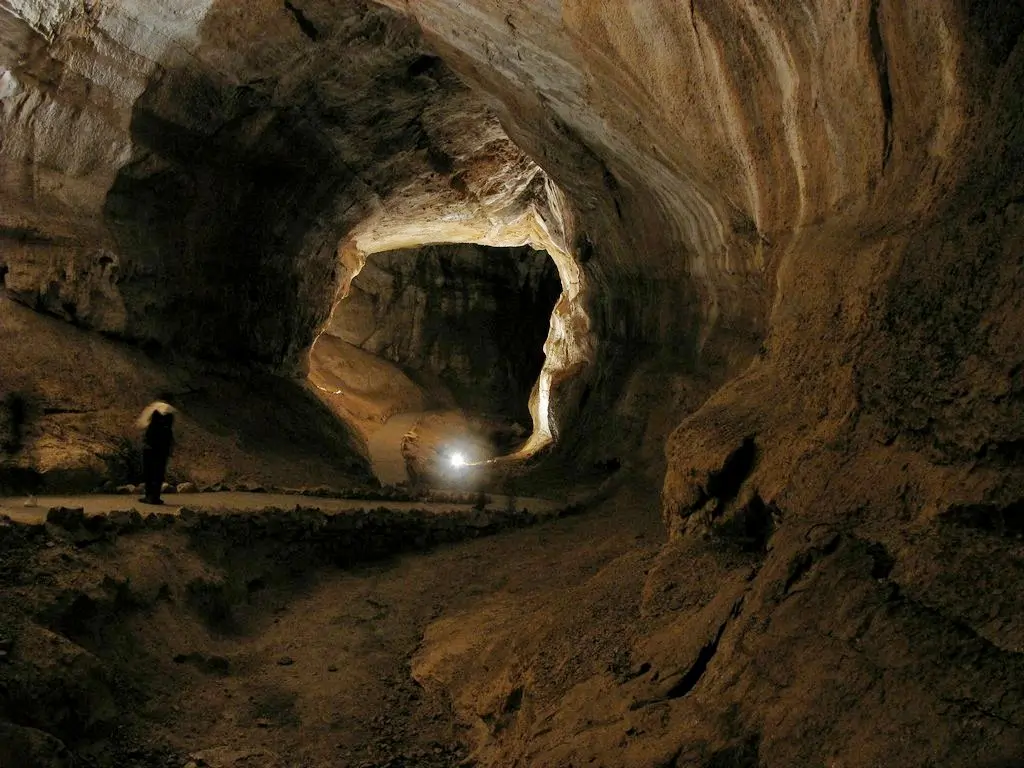
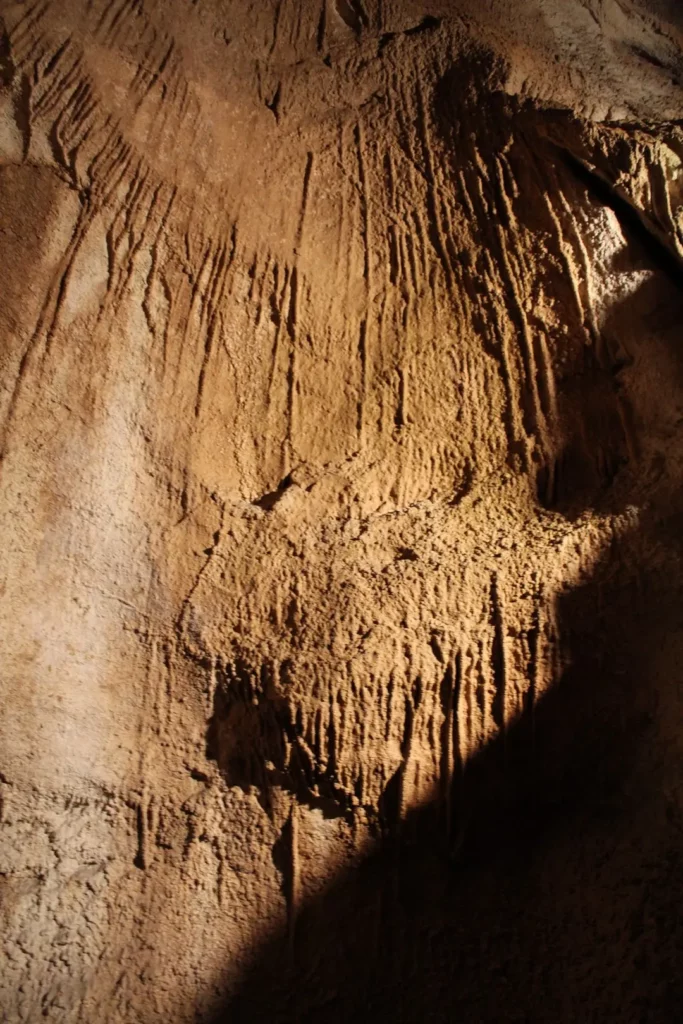

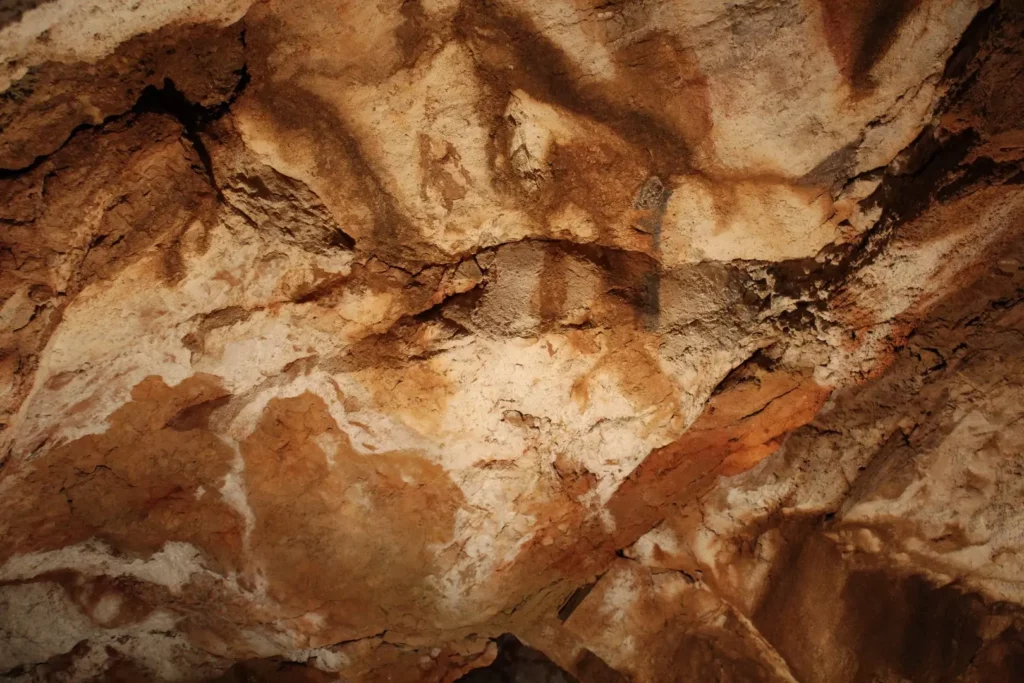
There are only five excursions in German during the day. But you can also ask for a notebook with English text. The temperature inside is about 3 degrees. Moreover, apparently due to the huge size of the cave, a cold wind almost constantly blows. The duration of the tour is about an hour. Here you can also arrange a guided tour with special equipment.
Other posts about the region:
Hallstatt: Town, History and Museum, Salt Mine, Echerntal waterfalls and glacial garden, Around lake
Gosau
Bad Aussee Lakeside. Lake Grundlsee, Lake Toplitz, Lake Altaussee
Salzkammergut map
Dachstein, Pongau, Tennegau map
Salzkammergut Lakes
Gmunden
Do you enjoy the site without cookies? This means that I work for you at my own expense.
Perhaps you would like to support my work here.
Or change your cookie settings here. I don’t use personalized ads

